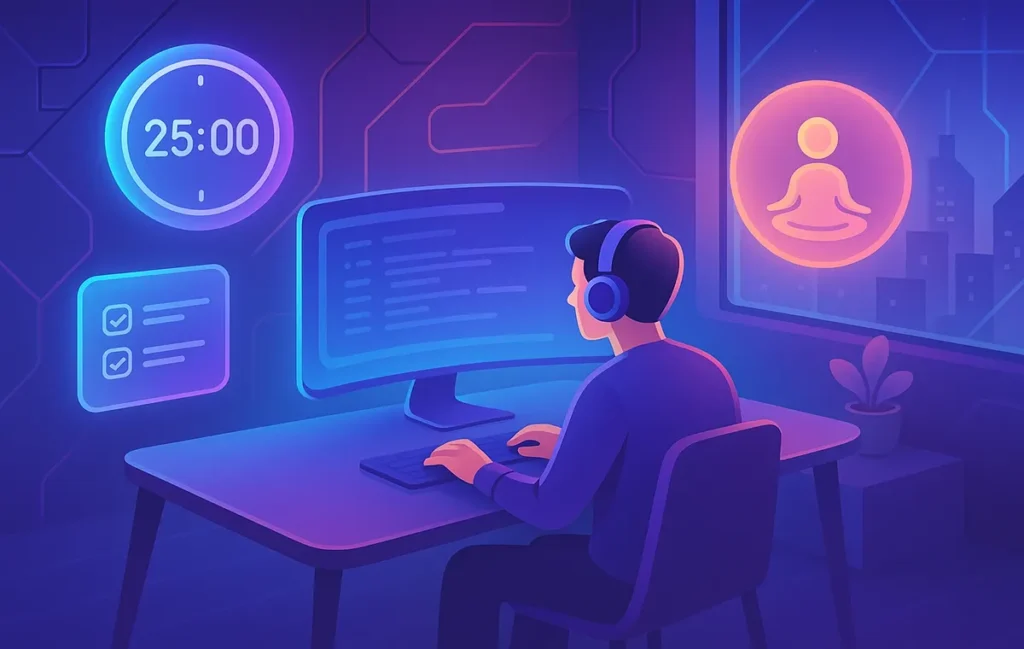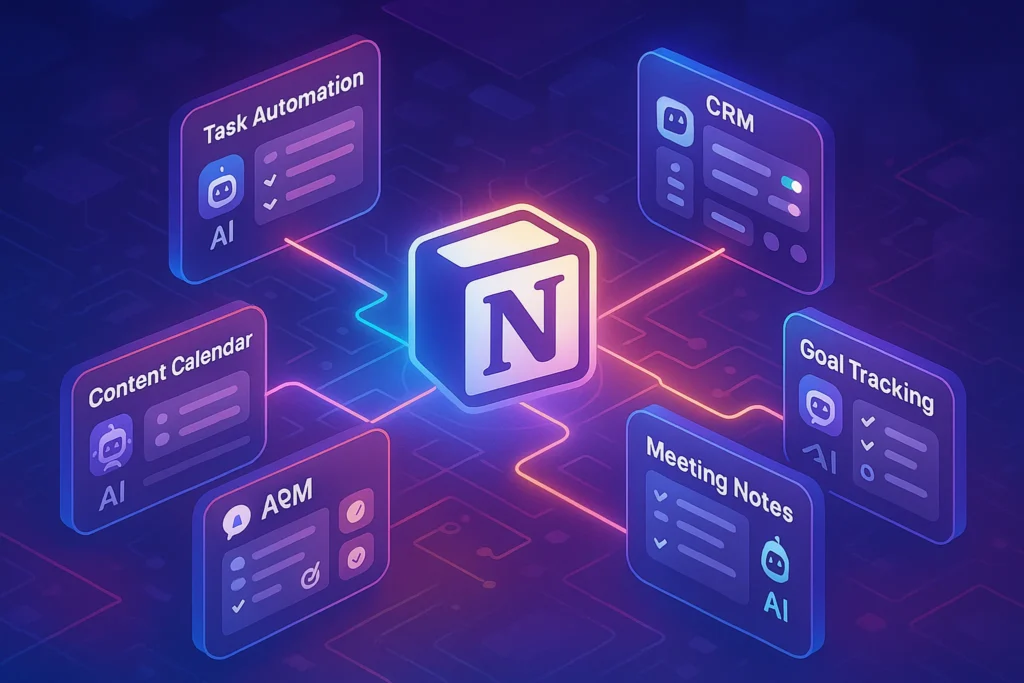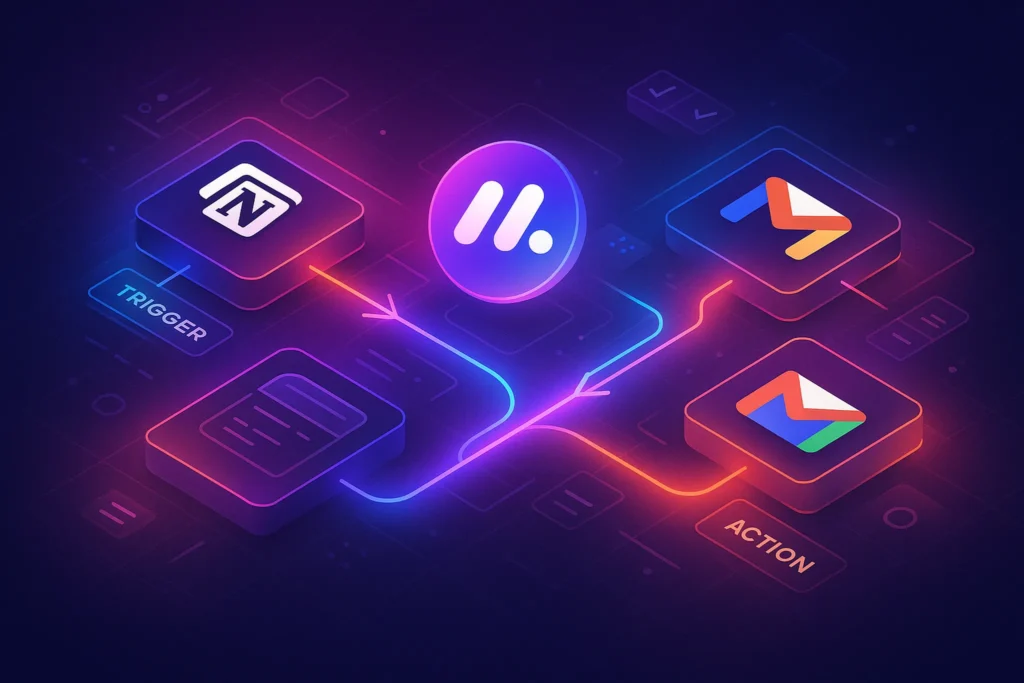🌍 Intro:
Remote work has transformed from a temporary fix into a permanent global movement. By 2025, over 35% of knowledge workers operate fully remote, with digital nomads and hybrid professionals shaping the future of productivity. Yet with freedom comes a paradox: constant distractions, blurred work-life boundaries, and the risk of shallow output.
Enter deep work techniques—a discipline popularized by Cal Newport and refined through years of practice. But applying deep work in a remote-first world isn’t about copying office-based tactics. It requires adapting focus rituals to distributed environments, time zone chaos, and tech-driven noise. In this guide, we’ll dive into how remote workers can focus deeply, consistently, and sustainably in 2025.
💡 Nerd Tip: Think of deep work as the currency of attention. Remote workers who master it will always outperform those living in distraction mode.
🧭 Why Deep Work is Non-Negotiable for Remote Professionals
For remote workers, distractions aren’t limited to office chatter. They range from Slack pings across time zones to the lure of social media and the lack of physical separation between home and work. Shallow work—quick replies, endless calls, busywork—can easily eat up 80% of the day, leaving little space for strategic progress.
According to the Future of Remote Work Report 2025, remote professionals who practiced at least two hours of deep work per day produced 3.5x higher output than peers who relied on reactive multitasking. Those who failed to implement deep work strategies reported higher stress, frequent burnout, and stagnation in career growth.
At NerdChips, we’ve seen that deep work isn’t just about focus—it’s about designing systems that resist distraction at scale. This is why foundational guides like Deep Work 101 and Mastering Focus in the Age of Digital Distractions resonate deeply in the remote context.
🏡 Remote Work Realities: Why Deep Work Feels Harder
Traditional office settings provide external cues for focus. Remote environments don’t. A digital nomad working from a noisy café in Lisbon or a parent managing work calls between school runs in Berlin faces challenges unique to this lifestyle.
Take time zones: A developer in Singapore might receive Slack notifications at midnight because their U.S.-based team is just starting the day. Without boundaries, “availability creep” turns every waking hour into shallow work territory. Remote workers often find themselves juggling asynchronous communication, client demands, and the constant temptation of multitasking.
💡 Nerd Tip: Don’t fight the environment—engineer it. Remote deep work starts with proactive design, not reactive firefighting.
🔒 Core Deep Work Techniques Adapted for Remote Workers
Deep work techniques in 2025 must go beyond generic “turn off notifications” advice. They need to address the specific pressures of remote work.
🌐 1. Asynchronous Time Blocking
Instead of syncing your focus blocks with team schedules, design asynchronous deep work blocks that prioritize your peak energy hours. Inform your team of your deep work windows so they respect your unavailability. Pairing this with guidance from Pro Tips for Managing Remote Teams Across Time Zones ensures collaboration doesn’t clash with focus.
🧘 2. Environmental Anchoring
Remote workers must build focus anchors in variable environments. This could mean noise-canceling headphones for digital nomads, or a ritual like lighting a candle or playing instrumental music before deep sessions. The brain learns to associate these cues with entering a deep focus state.
🖥️ 3. Digital Minimalism in Remote Setups
Working remotely means living in apps: Slack, Zoom, Asana, Notion. To survive, apply digital minimalism: dedicate one device or browser solely for deep work tasks, while restricting shallow apps to another. Remote workers who used this method reported 27% reduction in context-switching time in a 2025 pilot study.
🕹️ 4. Gamified Deep Work
Borrowing from behavioral design, gamifying deep work sessions can make consistency addictive. Tools that track streaks or reward milestones (such as Habitica or Rize AI) keep motivation high. As outlined in Top Focus Apps to Eliminate Distractions, gamification is proving to be a critical ally in remote focus.
⚡ Ready to Build Smarter Workflows?
Explore AI workflow builders like HARPA AI, Zapier AI, and n8n plugins. Start automating in minutes—no coding, just creativity.
🧪 Case Studies: Deep Work in Action for Remote Workers
Ana, the Remote Marketer:
Ana struggled with endless client calls spread across time zones. She implemented asynchronous deep work blocks from 9–11 AM daily, blocking Slack entirely. Within three months, her campaign strategy quality improved so much that her client retention rose by 22%.
Jon, the Digital Nomad Developer:
Jon worked while traveling across Europe, often from noisy cafés. He adopted environmental anchoring with noise-canceling AirPods and a simple “deep work playlist.” This ritual signaled his brain to enter focus mode even in chaotic spaces, allowing him to ship features 30% faster.
Priya, the Remote Project Manager:
Priya gamified her workflow by tracking deep work streaks. After 21 straight days of consistent focus blocks, she celebrated with a personal reward. The simple streak counter created a positive feedback loop that reinforced long-term consistency.
💡 Nerd Tip: Don’t wait for ideal conditions. Deep work for remote workers thrives on small, repeatable rituals—not perfect silence or unlimited time.
📊 Deep Work vs Shallow Work: Remote Comparison
| Shallow Work Remote Habits | Deep Work Remote Habits |
|---|---|
| Responding instantly to Slack messages | Setting clear “offline” hours for deep work |
| Juggling multiple open tabs | Single-tasking with focus apps and blockers |
| Attending unnecessary meetings | Structuring fewer, higher-quality async updates |
| Drifting into work without rituals | Anchoring deep work with cues (music, environment) |
🤖 AI Tools and the Future of Deep Work
2025 is the year AI stopped being just a productivity add-on and became a deep work partner.
-
Motion AI: Auto-schedules deep work based on energy levels and existing commitments.
-
Rize AI: Tracks attention in real time, alerting you when your focus dips.
-
Otter AI & Notion AI: Take meeting notes automatically, letting you reclaim deep work hours.
A user on X recently wrote: “Rize AI literally told me I was context-switching every 8 minutes. I fixed it. My code output went up 40% in two weeks.”
💡 Nerd Tip: Treat AI tools as scaffolding for your deep work, not replacements for discipline.
🌞 Aligning Deep Work with Your Chronotype
Not every remote worker thrives in the classic 9-to-5 rhythm. By 2025, research on chronotypes—your natural biological preference for sleep and focus—has become essential to optimizing deep work. Morning larks (early risers) hit peak focus in the first hours after waking, while night owls find their mental clarity late in the evening. Remote work offers the flexibility to design your schedule around these rhythms instead of forcing artificial alignment.
For example, a developer in Berlin who codes best after sunset can schedule client communication during the day and reserve 8–11 PM for uninterrupted focus. Conversely, a designer in Tokyo who loves early mornings can carve out 6–9 AM deep work sessions before the world wakes up.
💡 Nerd Tip: Audit your natural energy curve for a week—track when you feel most alert. Then lock your deep work blocks into those hours. Chronotype alignment is often more effective than any productivity app.
🌍 Cross-Cultural & Time Zone Deep Work Strategies
Remote work in 2025 often means collaborating across continents. But deep work dies quickly if every ping demands an instant response. The smartest teams now embrace asynchronous workflows to protect focus. Instead of daily stand-ups, remote teams are adopting async updates through tools like Loom, Notion docs, or short video check-ins.
Imagine this: a digital nomad in Lisbon starts her day with two hours of deep work before opening Slack. Meanwhile, her U.S. colleagues leave Loom updates overnight. By the time she checks in, she has context without sacrificing her flow. Pairing async practices with Pro Tips for Managing Remote Teams Across Time Zones creates a system where deep work isn’t constantly disrupted by different clocks.
💡 Nerd Tip: If your team resists async, start small. Propose one meeting a week replaced by a shared doc or Loom update. Track productivity gains to prove the value.
📏 Measuring Deep Work: Feedback Loops That Stick
“You can’t improve what you don’t measure.” This cliché is painfully true for deep work. Remote workers often feel like they’re “focused enough” but produce far less than they could. By introducing feedback loops, you make progress visible and sustainable.
Metrics that matter include:
-
Hours of true focus: Track uninterrupted sessions with apps like Rize or RescueTime.
-
Output quality: Writers can count published words, developers can track features shipped, marketers can measure campaign performance.
-
Energy reflection: End each session by rating your energy (1–5). Over time, patterns reveal what environments and times maximize your focus.
A 2025 study of 1,200 remote freelancers found that those who measured deep work consistently improved their output by 28% within three months compared to those who relied only on willpower.
💡 Nerd Tip: Add a simple “focus log” at the end of each day—just two lines noting hours of deep work and quality of focus. Small reflections compound into big clarity.
🌿 Restorative Practices: The Other Half of Deep Work
Deep work without deliberate rest leads to burnout. Remote workers especially struggle with blurred lines between work and home, often skipping true recovery. Sustainable focus comes from pairing intense work with restorative practices.
Short micro-breaks every 90 minutes reset mental clarity. A 10-minute walk, stretching, or even a breathing exercise can recharge you faster than scrolling through feeds. Longer recovery habits—like weekly “digital sabbaths” or scheduled nature time—act as anchors to prevent long-term exhaustion.
Remote workers who incorporated deep rest rituals reported 35% higher sustained focus across the week in a 2025 productivity cohort study. This aligns perfectly with insights from Why Rest is Your Productivity Superpower, proving rest is not indulgence—it’s an investment.
💡 Nerd Tip: Treat rest as seriously as meetings. Block your calendar for downtime, and don’t negotiate it away.
🧠 Future Lens: Neurotech & Wearables for Deep Work
The future of deep work isn’t just about apps—it’s about neurotech. Wearables in 2025 are making it possible to track and optimize focus at the brainwave level.
Devices like Muse S and Flowtime measure brainwave activity, nudging users when they drift out of concentration. Smart rings like Oura monitor HRV (heart rate variability) and recommend ideal deep work times based on recovery scores. Some even integrate with scheduling apps to auto-suggest focus blocks when your biology is primed.
Imagine starting your day with a notification: “Your focus window begins in 20 minutes—schedule deep work now.” These nudges move beyond discipline into data-driven optimization.
💡 Nerd Tip: Neurotech won’t replace rituals, but it can amplify them. Combine biofeedback with deep work cues (like music or environment) for exponential focus.
📬 Want More Smart AI Tips Like This?
Join our free newsletter and get weekly insights on AI tools, no-code apps, and future tech—delivered straight to your inbox. No fluff. Just high-quality content for creators, founders, and future builders.
🔐 100% privacy. No noise. Just value-packed content tips from NerdChips.
🧠 Nerd Verdict
Deep work in 2025 is no longer a luxury—it’s the core survival skill for remote professionals. By combining time-blocking, environmental anchoring, digital minimalism, and AI support, remote workers can build focus systems that withstand distractions. The future belongs to those who master attention in a world designed for interruptions. And at NerdChips, we believe deep work is how remote workers turn freedom into real impact.
❓ FAQ: Nerds Ask, We Answer
💬 Would You Bite?
What’s the hardest part of maintaining deep work as a remote professional—time zones, digital distractions, or lack of rituals?
Share your battle below. 👇
Crafted by NerdChips for creators and teams who want their best ideas to travel the world.



